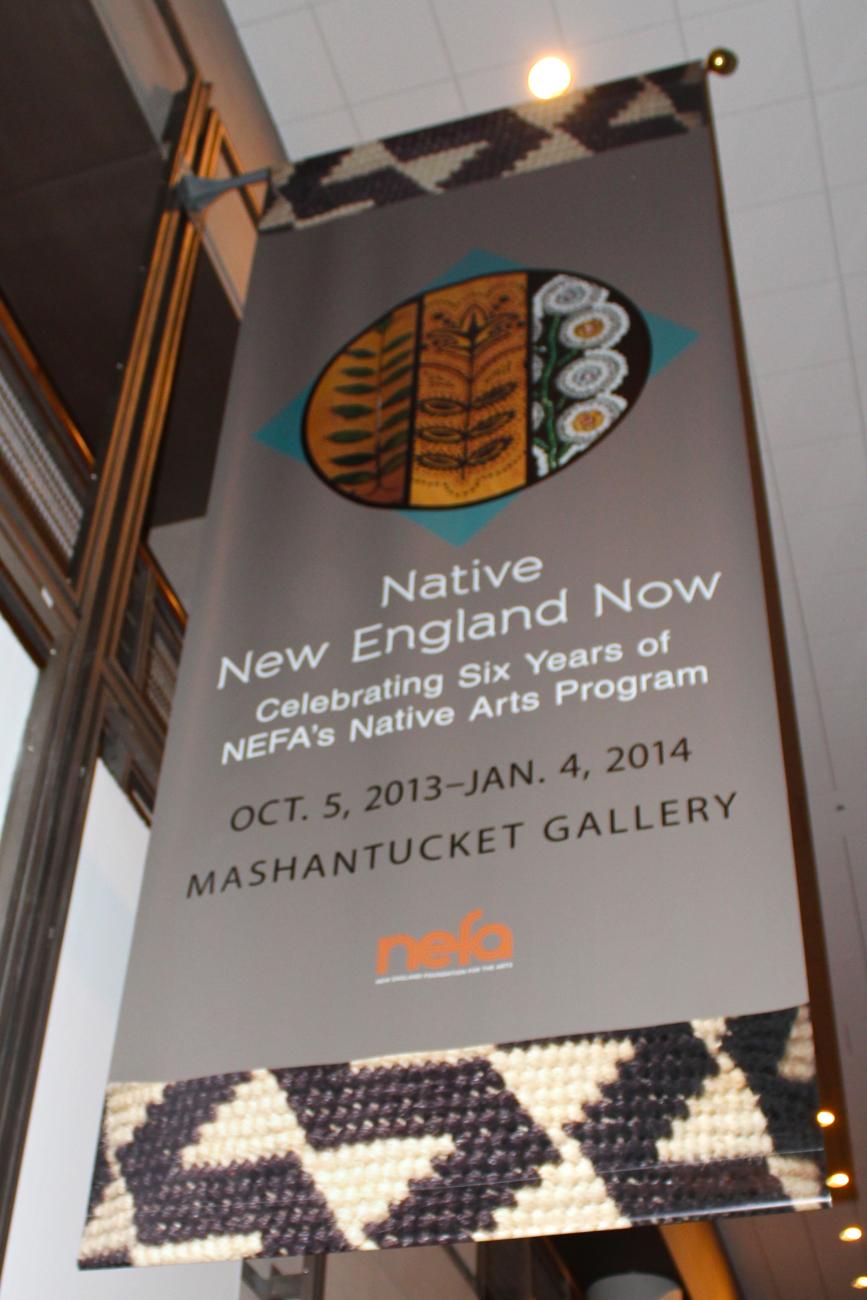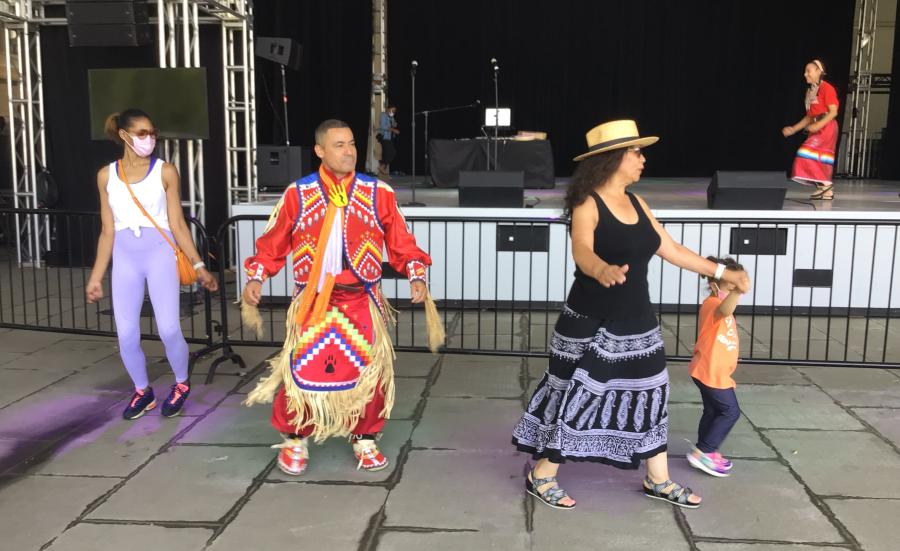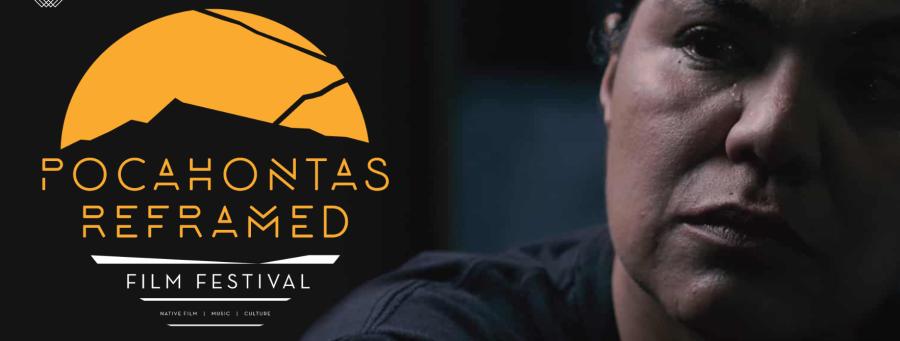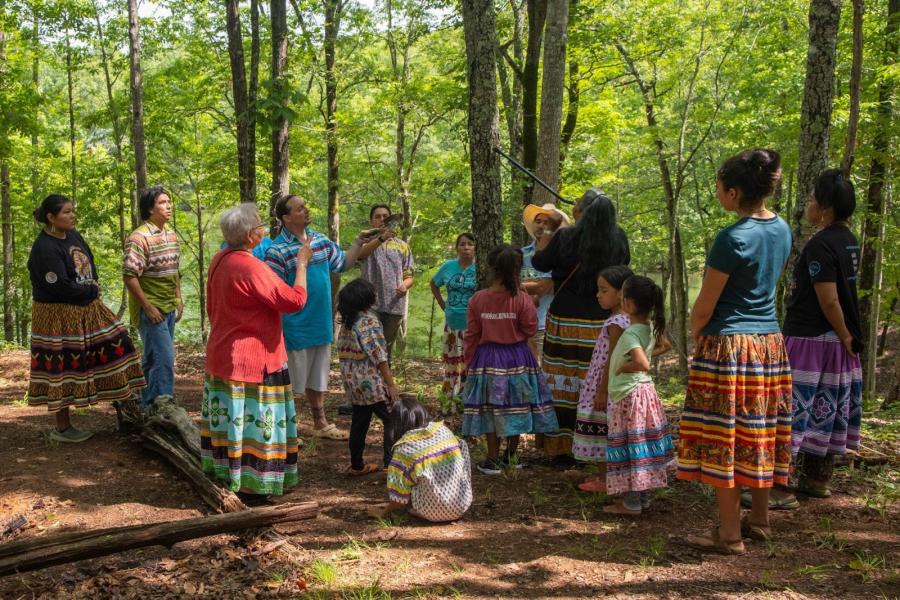
By Amy Ferguson and Sara Schenkel
The Mashantucket Pequot Museum is currently displaying the exhibition Native New England Now until January 4, 2014. The exhibit represents tribal communities from all six New England states and displays Native art from twenty-seven different artists. On November 16, 2013, four featured artists took part in a panel discussion at the museum.
A partnership between the museum and the New England Foundation for the Arts (NEFA) made the exhibit to be possible. NEFA works to build connections among artists, arts organizations, and funders powering the arts to energize communities in New England, the nation, and the world.
The exhibits allows select Native artists to display their work in a serene and spacious area. The artists from the panel described being grateful for the opportunity to show their art and are very pleased with the support from the Native community. The panel included Jeanne Kent (Nulhegan Band, Coosuk Abenaki of Vermont), Elizabeth Perry (Aquinnah Wampanoag), Robert Peters, (Mashpee Wampanoag) and Jennifer Kreisberg (Tuscarora, North Carolina).
The panelists discussed the importance of art relative to Native American cultures. All four artists described their spiritual connections to their art. This notion of spirituality within art is common throughout Native artists as well as contemporary artists. The panelists expressed a belief that art is not separate from culture but are one in the same. Their creations reflect their lifeways, beliefs, history and other aspects significant in their cultures. The art also reflects the lands off which Native people live. Some of the creations are mostly made from materials that were harvested from the earth, such as gourds or wampum beads. Elizabeth Perry stated, “As artists we enjoy work that brings happiness and peace. The world today is scary with climate change and the loss of Native communities.” Art is necessary for spiritual replenishment.
This spiritual sensation proliferated through the exhibit. Many of the members of the panel admitted that exhibit allows the ability for Native art to be shared in a safe place. Trudie Lamb Richmond, a NEFA board member and the former director of public programs at the Mashantucket Pequot Museum and Research Center, said she could feel the energy of the art and feels as though there is peace in the exhibit. Robert Peters shared, “What NEFA has done is given artists an opportunity to do their work [by funding them]. People choose to do work that is spiritual or meaningful.”
The artists described needing to create not only to express their cultures, but to express themselves personally. Jeanne explained that she “had to create to breathe, if I don’t create, I die.” Robert Peters described becoming absolutely enveloped in his work, starting a piece and working all through the night until he “sees a light coming in the window, then it becomes dark, then the light comes in again” and he is still working.
For Peters, art is also a way to tell stories of his childhood on a reservation. He draws on memories, which are often “faded,” but “when they come back its like ‘woah.’” Indeed, his paintings mostly draw on events and everyday life that he remembers from the 1970’s. One painting of his shows people and fire trucks at the scene of a forest fire. Peters remembers this fire persisting for six months and that anyone in the community who hopped on the back of a fire truck could act as a fireman. By painting the fire on the very edge of the canvas, he seems to highlight the community’s involvement in the center of the painting rather than the fire’s destruction. Another one of his paintings shows a drum circle and fire pit with people surrounding. The people are all wearing modern clothing portraying Native cultures as both current and evolving.
Peters said, “If I didn’t take the time to paint our way of life at that particular time, there is a strong possibility no one else would.” He said the world of his reservation was in transition during his childhood, having to file petitions for land that had been public for 100 years, and that they were losing control of their town offices and selectmen. Indeed, his work displays this transitioning world.
Jeanne described how coming to Native art has been spiritually satisfying. She said that her art before she did Native art was “like eating junk food, not fulfilling.” For Jeanne, her art helps to bind together her Native Abenaki community, who often are not able to come together.
For Jennifer Kreisberg, art has healing powers. Art has helped to heal her frustrations and her anger at injustice and inequality in the world. She described art as “making medicine.” When she performs she says she lets “spirit take control,” “takes care of our spirit”, and “gets out what’s inside.”
In many cases, “what’s inside” can be oppression or a disconnect from cultures and resources. As Peters put it, Native Peoples are often “systematically disadvantaged.” Because of shortages of wealth and resources, he said, “Our way of thinking has changed. We went from looking at generations in the future to looking only a week ahead. This a disadvantage for caring for the future of our world.” Perry also bemoaned the loss of communities that Native Americans have experienced. She identified the difficulty of getting jobs or living off a tourist economy. She mentioned that Native people have to go outside of their communities to receive a university education. And climate change is threatening many Indigenous communities.
But Perry also sees a future for Native communities. Describing culture as cyclical, she said her culture may not be dying but may sometimes be sleeping. By studying traditional crafts from the museum’s collection and by seeking out knowledge she, and others, are able to “recapture [their] technology” of Native crafts. She seeks to express common cultural values through visual and spiritual arts and “share our past as well as our future.”
Kreisberg verbalized that people have to “keep finding ways to make community” and “make good use of our time” on Earth. “We have to,” she asserted, and by doing so “we are making a better place in the world,” she said. Having a child, she said she came to the conclusion that such an outlook is necessary, because she can’t think that she has brought a child into a cruel and dark world.
Peters spoke about the satisfaction of “bringing light” to his culture, that his art and others’ art “shows that we still have a future”, and that “the world isn’t always kind, and sometimes you need to fight.” Indeed, these artists are fighting to preserve and recreate their culture.
As Kreisberg concluded, Native artists “must support each other,” and “supporting an organization like [NEFA] keeps [their] culture thriving.”



